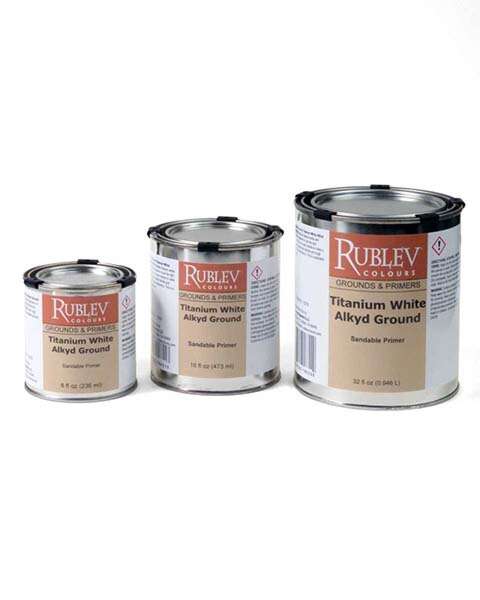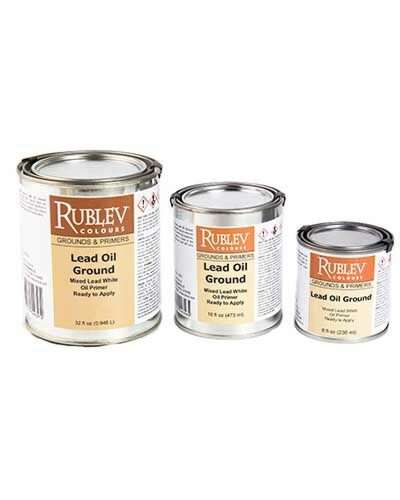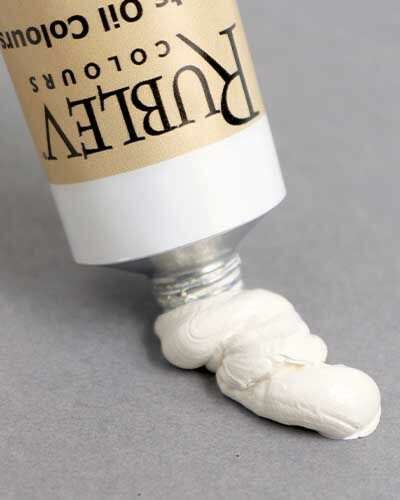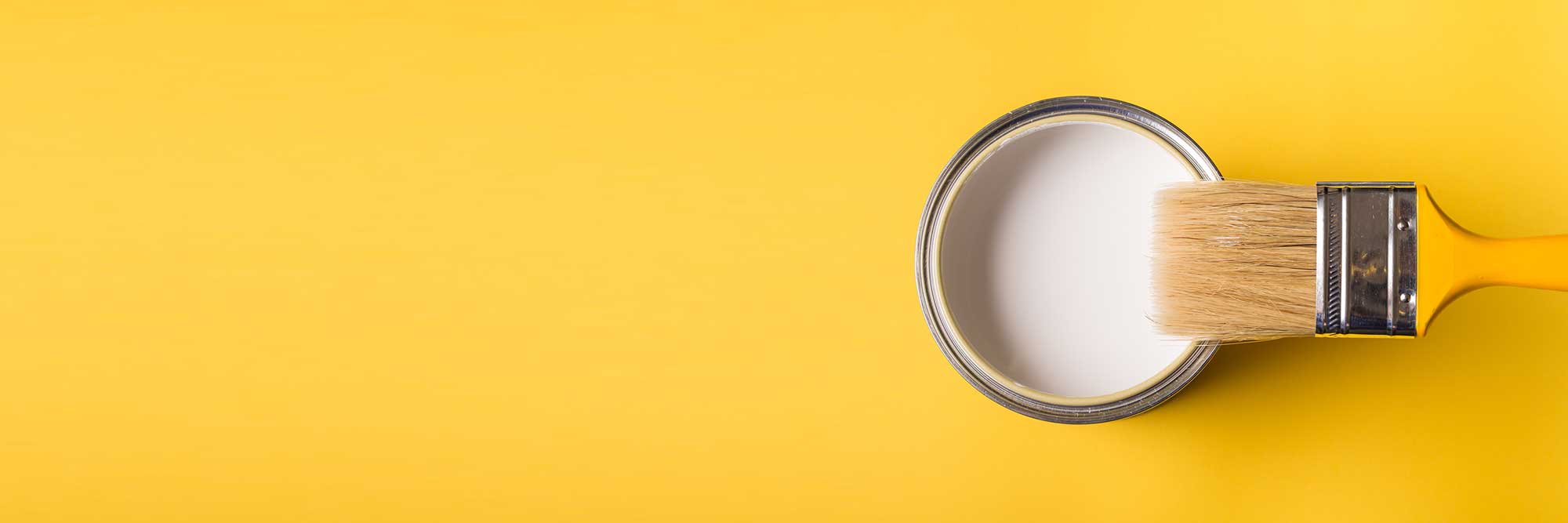
Since the 1970s, it has become difficult to buy lead white in linseed oil to prime canvases and panels. As a result, artists who wish to use oil priming for their supports usually must substitute other materials for the lead white in linseed oil.
Some manufacturers of artists' materials still sell lead white oil paint in cans and large-capacity tubes. It should be noted, however, that most, if not all, of these lead white artists' oil colors, are ground in safflower oil or poppy seed oil and not in linseed oil. They are slower drying and form films that may be less suitable than lead white in linseed oil for the ground coat of a painting. They are also substantially more expensive than pure lead white in linseed oil. The lead white offered by artists' materials manufacturers is also too stiff to apply directly from the can or tube, requiring artists to thin and mix the lead white to the right consistency for priming.
The answer is to use a lead oil ground formulated explicitly for priming canvas or panels. One such ground for oil painting is Rublev Colours Lead Oil Ground. The following describes how to prime canvas or board using Rublev Colours Lead Oil Ground.
Required Materials
Equipment
Brush, 2- or 3-inch wide bristle
Palette knife, preferably 6-inch long trowel-shaped
Materials
Rublev Colours Lead Oil Ground
Canvas or Panel
Procedure
-
Apply two coats of animal collagen glue to the canvas or panel and allow it to dry before priming with the oil ground.
-
The pigment may settle to the bottom of the can of Rublev Colours Lead Oil Ground and form sediment that must be remixed into the vehicle. Use a rigid blade, such as a stiff narrow putty knife or wide blade screwdriver, to break up the sediment and stir until thoroughly mixed to a smooth consistency. It is not necessary to thin Rublev Colours Lead Oil Ground. Still, if you want a thinner consistency, you may add some odorless mineral spirits, mineral spirits (white spirits), or turpentine to the primer.
-
Apply the lead oil ground to the face of the sized support with either a brush or a palette knife. Cover small sections at a time—about 6 by 6 inches. Work the primer into the weave of the canvas so that it adheres well to the fabric. Apply lead oil ground to the sides of the canvas or panel to protect them against wear.
-
Before the lead oil ground sets, remove excess primer by scraping with the palette knife. The coating should be even, thin, without streaks, and worked well into the weave. Avoid leaving scraped lines over the edge of the stretcher strips on the canvas. Push up under the canvas with your hand and lift it away from the stretcher strips as you scrape over it.
-
Allow the support to dry well in a well-lit, dry, and warm place free from dust; usually, three to six days is sufficient. Apply a second coat of lead oil ground in the same manner as the first.
-
Allow the second coat to dry for at least two weeks in a warm, dry place where it will be exposed to light before painting. White lead grounds should be dried in the light, or they will darken appreciably. If the lead oil priming has darkened from being stored in the dark, it may be restored to its original condition by exposing it to indirect daylight for a few days. Remember, however, that all linseed oil grounds yellow slightly with age.
-
Wash all brushes and tools with odorless mineral spirits, then wash with soap and water.
Note
Adding zinc white pigment, such as zinc white artists' color, to linseed oil grounds may make the ground whiter, but it will also reduce the flexibility of the grounds. New research indicates that it may also make the ground brittle. Please read the article, Zinc White: Problems in Oil Paint, for more information on this issue.
Rublev Colours Lead Oil Ground
Rublev Colours Lead Oil Ground is a blend of white pigments and linseed oil for a semi-absorbent ground ideal for oil painting. It dries within one to two days, depending upon local conditions, such as humidity, light, and temperature. You can usually begin painting within a few days if allowed to dry in a warm, well-lit, and dry environment.
Rublev Colours Lead Oil Ground contains ground calcite, lead white, and titanium white in just the right proportions to make a paint film that remains flexible and tough with some absorbency. The blend of linseed oil penetrates the support to ensure good adhesion yet maintains sufficient holdout to form a good foundation for paint layers. It provides good leveling properties, so brush and knife marks are minimized. It can be applied with a brush or knife right out of the can without thinning.
Rublev Colours Lead Oil Ground has a high concentration of pigments, so only two coats are usually necessary, but more coats create smoother surfaces. Apply directly onto panels without sizing or on canvas sized with PVA or rabbit skin glue. Rublev Colours Lead Oil Ground is an excellent foundation for oil and alkyd paint.
Rublev Colours Lead Oil Ground is ready to apply to properly sized canvases or panels without further preparation. Here is the recommended procedure for applying the Rublev Colours Lead Oil Ground to canvas or panel.
Rublev Colours Lead Oil ground is not 100% lead white ground but contains titanium white and ground calcite (chalk) in linseed oil. These pigments are added to increase the whiteness of the ground and make it absorbent and less susceptible to damage from humidity without sacrificing flexibility.
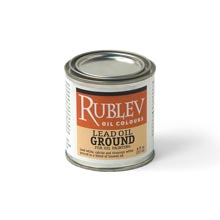
Rublev Colours Lead Oil Ground 8 fl oz (236.6 ml)
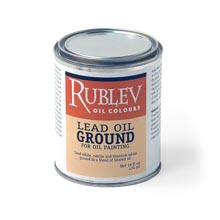
Rublev Colours Lead Oil Ground Pint 16 fl oz (473.2 ml)
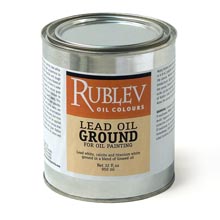
Rublev Colours Lead Oil Ground Quart 32 fl oz (0.95 L)



